Q. Under the Scheduled Tribes and Other Traditional Forest Dwellers (Recognition of Forest Rights) Act, 2006, who shall be the authority to initiate the process for determining the nature and extent of individual or community forest rights or both?
(a) State Forest Department
(b) District Collector/Deputy Commissioner
(c) Tahsildar/Block Development Officer/Mandal Revenue Officer
(d) Gram Sabha
Answer: (d) Gram Sabha
Notes:
- According to Chapter IV of the Forest Rights Act, 2006, the Gram Sabha is the authority to initiate the process for determining the nature and extent of individual or community forest rights or both.
- Gram Sabha:
- Gram Sabha is the authority for Scheduled Tribes and Other Traditional Forest Dwellers within the local limits of its jurisdiction.
- It receives claims, consolidates and verifies them, prepares a map delineating the area of each recommended claim in such manner as may be prescribed for the exercise of such rights.
- It then passes a resolution to the effect, and thereafter forwards a copy of the same to the Sub-Divisional Level Committee.
- State Level Monitoring Committee:
- According to Section 6(7) of FRA, the State Level Monitoring Committee has to perform the following functions:
- Monitor the process of recognition and vesting of forest rights.
- Submit to the Nodal Agency, the returns and reports demanded by it.
- According to Section 6(7) of FRA, the State Level Monitoring Committee has to perform the following functions:
- Nodal Agency:
- According to Section 11 of the FRA, the following may be the Nodal Agency:
- Ministry of Tribal Affairs
- Any officer or authority authorized by the Central Government on this behalf.
- The State Governments/UTs ensure that no eligible claim is rejected.
- According to Section 11 of the FRA, the following may be the Nodal Agency:
Q. Acid rain is caused by the pollution of environment by
(a) Carbon dioxide and nitrogen
(b) Carbon monoxide and carbon dioxide
(c) Ozone and carbon dioxide
(d) Nitrous oxide and sulphur dioxide
Answer: (d) Nitrous oxide and sulphur dioxide
Acid Rain
- The term Acid Rain was first coined by Scottish chemist Robert Angus Smith in the year 1852.
- Normal rainwater is weakly acidic due to the presence of carbonic acid, which is formed due to the absorption of carbon dioxide from the atmosphere.
- Definition of Acid Rain – Rain or any other form of precipitation that has a higher level of hydrogen ions (i.e. low pH < 5.6), is termed as Acid Rain.
- Oxides of sulphur and nitrogen which are acidic in nature are responsible for causing Acid Rain.
- Human activities like the burning of fossil fuels, volcanic activities, etc. result in the formation of sulphur dioxide and nitrogen oxides.
- These oxides after oxidation and reaction with water are the major contributors to Acid Rain.
- Following chemical reactions occur:
- 2SO2 (g) + O2 (g) + 2H2O (l) → 2H2SO4 (aq)
- 4NO2 (g) + O2 (g) + 2H2O (l) → 4HNO3 (aq)
Aftermaths of Acid Rain:
- Deteriorates plant and animal life in the aquatic ecosystem.
- It corrodes water pipes resulting in the leaching of heavy metals (iron, lead, copper) into drinking water.
- It damages buildings and other structures made of metal or stone (eg. Taj Mahal)
- Chemical reaction occurring at the surface of Taj Mahal: CaCO3 + H2SO4 → CaSO4 + H2O + CO2
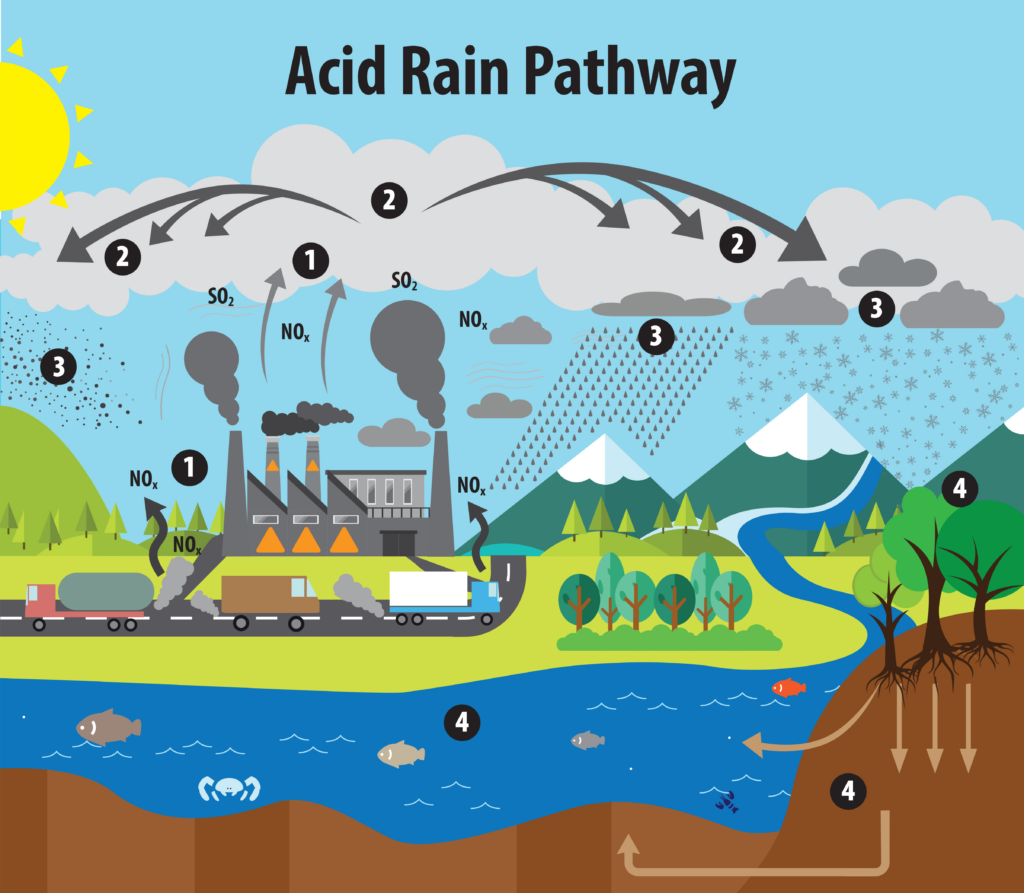
Q. With reference to food chains in ecosystems, consider the following statements:
- A food chain illustrates the order in which a chain of organisms feed upon each other
- Food chains are found within the populations of a species
- A food chain illustrates the numbers of each organism which are eaten by others
Which of the statements given above is/are correct?
(a) 1 only
(b) 1 and 2 only
(c) 1, 2 and 3
(d) None
Answer: (a) 1 only
Food Chain
- Transfer of food energy from green plants (producers) through a series of organisms with repeated eating and being eaten link is called a food chain.
- E.g. Grasses → Grasshopper → Frog → Snake → Hawk/Eagle.
- Each step in the food chain is called a trophic level.
- A food chain starts with producers and ends with top carnivores.
- The trophic level of an organism is the position it occupies in a food chain.
- A food chain illustrates the order in which a chain of organisms feeds upon each other.
- Food chains are not found within the populations of ‘a’ species, because technically, Food chain is the sequence of organisms through which the energy flows. If the species starts eating itself, then flow of energy will not proceed – Hence statement 2 is not correct.)
- Food chain doesn’t show “numbers” of each organism eaten by others, (food web illustrates the number, not the food chain).
Food Web
- Multiple interlinked food chains make a food web.
- Food web represents all the possible paths of energy flow in an ecosystem.
- If any of the intermediate food chains is removed, the succeeding links of the chain will be affected largely.
- The food web provides more than one alternative for food to most of the organisms in an ecosystem and therefore increases their chance of survival.
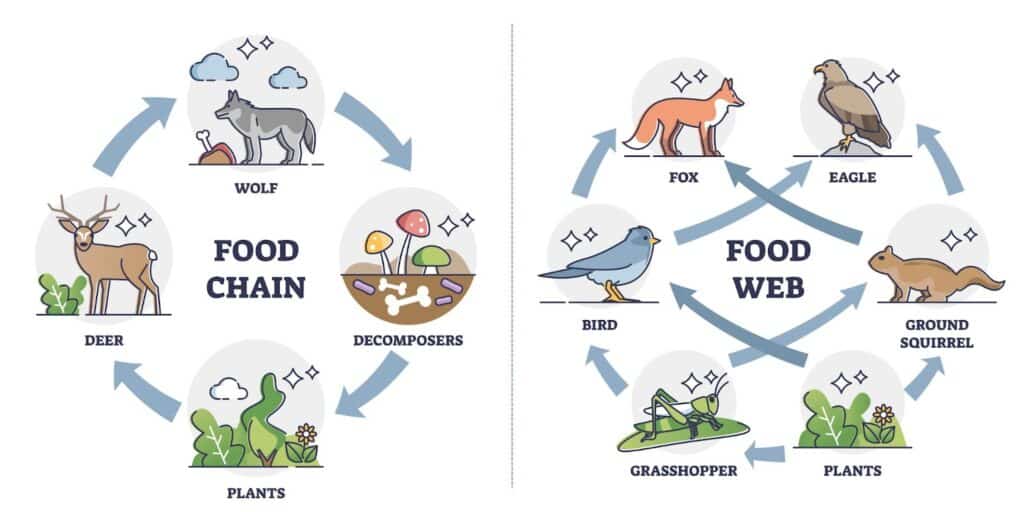
Q. In which of the following States is lion-tailed macaque found in its natural habitat?
- Tamil Nadu
- Kerala
- Karnataka
- Andhra Pradesh
Select the correct answer using the codes given below:
(a) 1, 2 and 3 only
(b) 2 only
(c) 1, 3 and 4 only
(d) 1, 2, 3 and 4
Answer: (a) 1, 2 and 3 only
Lion-tailed macaque
- The lion-tailed macaques are only native to India.
- There, they live in the Western Ghats hills and mountains of southwestern India.
- They are primarily endemic to small and severely fragmented rainforests of the Western Ghats in Karnataka, Kerala and Tamil Nadu.
- It can also be found in monsoon forests in hilly country and in disturbed forests.
- Protected areas:
- Kudremukh National Park (Karnataka)
- Periyar National Park (Kerala)
- Silent Valley National Park (Kerala)
- Conservation and Protection:
- IUCN Red List: Endangered.
- It is listed in Appendix I of CITES.
- It is protected under Schedule I, Part I, of the Wildlife (Protection) Act, 1972
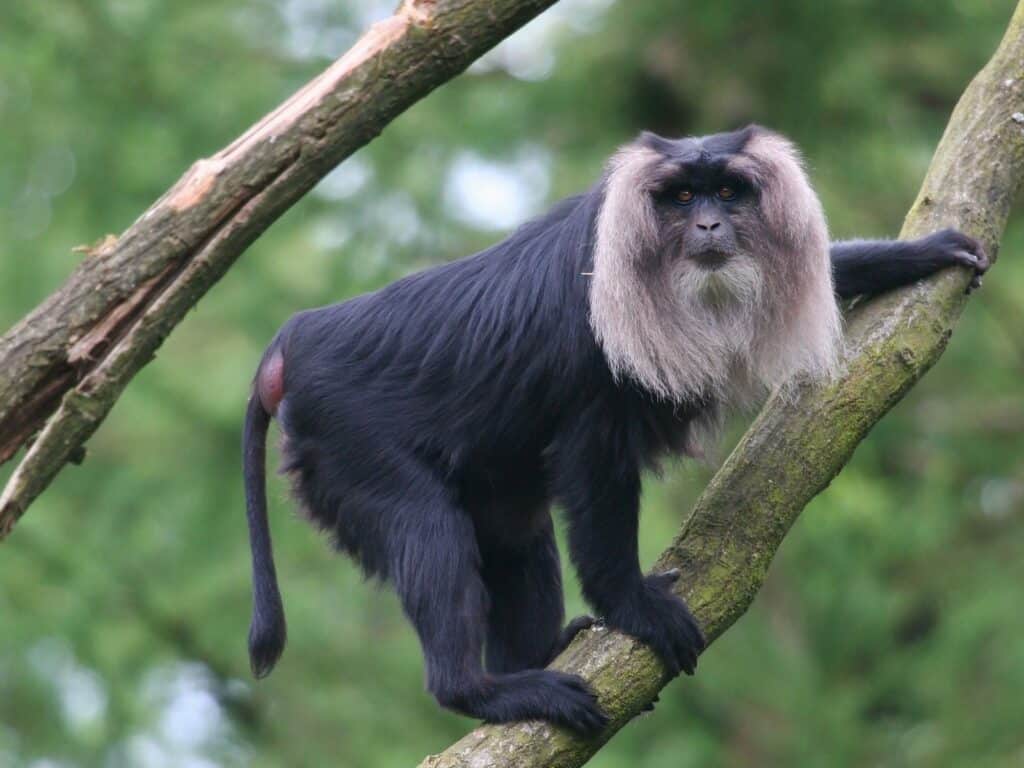
Q. Which one of the following terms describes not only the physical space occupied by an organism, but also its functional role in the community of organisms?
(a) Ecotone
(b) Ecological niche
(c) Habitat
(d) Home range
Answer: (b) Ecological niche
Ecological Niche
- A niche refers to the unique functional role and position of a species in its habitat or ecosystem.
- The functional characteristics of a species in its habitat are referred to as “niche” in that common habitat.
- In nature, many species occupy the same habitat, but they perform different functions.
- habitat niche – where it lives, food niche – what is eaten or decomposes & what species it competes with,
- reproductive niche – how and when it reproduces,
- physical & chemical niche – temperature, land shape, land slope, humidity & another requirement.
- Niche plays an important role in the conservation of organisms. If we have to conserve species in their native habitat, we should have knowledge about the niche requirements of the species.
Ecotone
- Ecotones are locations where two or more biological communities, ecosystems, or biotic regions meet.
- Ecotones are formed when environmental conditions change abruptly.
- The coexistence of different species and living forms is influenced by environmental changes, both within ecosystems and at their edges, where ecotones may arise.
- Ecotones indicate a physical transition from one ecosystem to another, as well as a change in living conditions, including habitats and niches.
- Ecotones are difficult environments for inner organisms, but they are rich in opportunities for edge organisms.
- It has circumstances that are transitional between the neighbouring ecosystems. As a result, it is a tense zone.
- Some species in a well-developed ecotone are completely distinct from those in neighbouring groups.
- Edge Effect
- Edge effects refer to the changes in population or community structures that occur at the boundary of two habitats.
- Generally, there is a greater number of species found in these regions (ecotones) and this is called the edge effect. The species found here are called edge species.
- Habitat – surroundings in which an organism lives (home).
- Home Range – A home range is an area in which an animal lives and moves on a daily or periodic basis (a little bigger than habitat – home → office → home).
Q. Photochemical smog is a resultant of the reaction among
(a) NO2, O3 and peroxyacetyl nitrate in the presence of sunlight
(b) CO, O2 and peroxyacetyl nitrate in the presence of sunlight
(c) CO, CO2 and NO2 at low temperature
(d) High concentration of NO2, O3 and CO in the evening
Answer: (a) NO2, O3 and Peroxyacetyl nitrate in the presence of sunlight
Photochemical Smog
- Smog is a secondary pollutant, which has made up of Smoke and Fog.
- Photochemical smog, also known as summer smog, is a type of smog that is produced when UV light originating from the sun interacts with the oxides of nitrogen present in the atmosphere.
- This type of smog usually manifests as a brown haze and is most commonly seen in highly populated cities that are placed in relatively warm climates.
- Furthermore, photochemical smog is most prominently visible during the mornings and afternoons.
- Traditionally, the smog has resulted from large amounts of coal burning in an area caused by a mixture of smoke and sulfur dioxide.
- Nowadays, the Vehicle emissions and Industrial emissions that are acted on in the atmosphere by ultraviolet light from the sun to form secondary pollutants that also combine with the primary emissions to form photochemical smog.
- The major chemical pollutants in Photochemical smog are NO, NO2, volatile organic compounds, Ozone, and PAN (Peroxyacetyl Nitrate).
- NO2 decreases visibility due to yellowish colour.
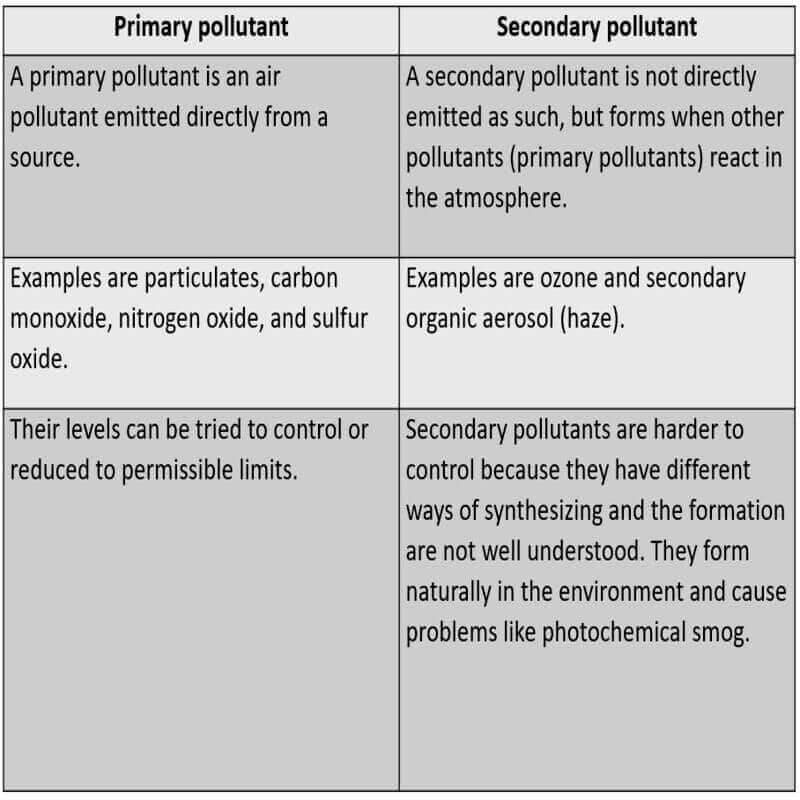
Q. Consider the following:
- Star tortoise
- Monitor lizard
- Pygmy hog
- Spider monkey
Which of the above are naturally found in India?
(a) 1, 2 and 3 only
(b) 2 and 3 only
(c) 1 and 4 only
(d) 1, 2, 3 and 4
Answer: (a) 1, 2 and 3 only
Star tortoise
- The Indian Star Tortoise (Geochelone elegans) is a threatened tortoise species native to India, Pakistan and Sri Lanka where it inhabits dry areas and scrub forest.
- It is kept as pets, across homes in South East Asia, Europe and North America. Indian Star Tortoises are smuggled to countries like Japan and China as it is believed to bring good luck if it is kept as pets at home.
- It is also perceived to have medicinal values.
- Habitat:
- Indian star tortoise is found across the Indian sub-continent, more specifically, in the Central and Southern parts of India, in West Pakistan and in Sri Lanka.
- In India, they are found in the states of Odisha, Kerala, Tamil Nadu, Karnataka, Gujarat, Punjab.
- Protection Status:
- Wild Life Protection Act 1972: Schedule IV
- Schedule IV: This list is for species that are not endangered. It includes protected species but the penalty for any violation is less compared to the Schedules I and II.
- Convention on International Trade in Endangered Species (CITES): Appendix I
- IUCN Status: Vulnerable
- Wild Life Protection Act 1972: Schedule IV
- Threat: The species faces two threats- loss of habitat to agriculture and illegal harvesting for the pet trade.
- Due to the extremely high demand for Indian star tortoises, they continue to be smuggled from India to South-East Asian countries for a long time, despite many measures being taken by Customs Authorities of India and international regulations to stop the smuggling.
- According to the Wildlife Crime Control Bureau, 90% of the trade of Star Tortoise occurs as part of the International pet market.
- If their exploitation had continued at a similar pace or had expanded, a decline of greater than 30% was predicted by 2025.
- Conservation Efforts:
- Recently India’s proposal to upgrade the protection status of Star Tortoise from Appendix II to Appendix I was approved by the Convention on International Trade in Endangered Species of Wild Fauna and Flora (CITES).
- Characteristics:
- Indian star tortoise has medium-sized head, hooked beak, and short, thick legs covered with tubercles of various sizes and shapes. Males have a long tail, while females have short and stubby tails.
- Indian star tortoise is a diurnal animal that is mostly active in the morning and late in the afternoon.
- Behaviour and Temperament: Indian star tortoises do not like being handled. They can get stressed out and get ill if handled frequently.
- Food Habits: Star tortoises are herbivores. They need plenty of fresh and dark leafy greens and grasses.

Monitor lizard
- The scientific name of Bengal Monitor or Common Indian Monitor is Varanus bengalensis.
- They are native to Africa, Asia, and Oceania, and one species is also found in the Americas as an invasive species.
- The reptile is found in Afghanistan, Bangladesh, Burma, India, Iran, Nepal, Pakistan, and Sri Lanka.
- The Bengal Monitor Lizard is a part of CITES Appendix I and Schedule I of the Wildlife Protection Act, 1972.
- The species is hunted for medicinal purposes and also for consumption.

Pygmy hog
- The scientific name of Pygmy Hog is Porcula salvania and is a mammal.
- It is listed as endangered on the IUCN Red List and is also listed in Schedule I of the Wildlife Protection Act, 1972.
- It thrives in wet grassland.
- Since it is the sole member of its genus, its conservation becomes even more important and is thus protected in the Manas National Park of Assam.
- It is also an indicator species. Its presence reflects the health of its primary habitat, the tall, wet grasslands of the region.
- Pygmy Hog Conservation Programme (PHCP):
- The PHCP is a collaboration among Durrell Wildlife Conservation Trust of UK, Assam Forest Department, Wild Pig Specialist Group of International Union for Conservation of Nature (IUCN) and Ministry of Environment, Forest and Climate Change.
- It is currently being implemented by NGOs – Aaranyak and EcoSystems India.
- Conservation of pygmy hog was initiated by noted naturalist Gerald Durrell and his trust in 1971.
- The pygmy hog was brought back from near-extinction by the partnership effort, and now moving towards the establishment of a population across the entire range.
- Six hogs were captured from the Bansbari range of the Manas National Park in 1996 for starting the breeding programme.
- The reintroduction programme began in 2008 with the Sonai-Rupai Wildlife Sanctuary, Orang National Park and Bornadi Wildlife Sanctuary, all of them are in Assam.
- By 2025, the PHCP plans to release 60 pygmy hogs in Manas.
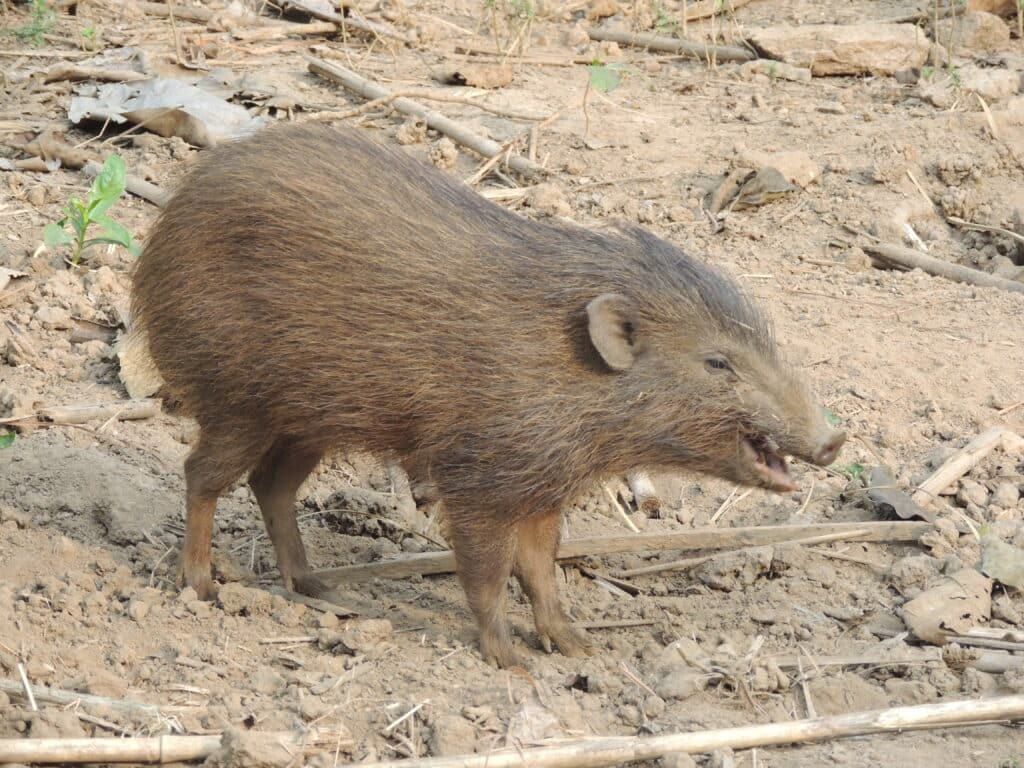
Spider monkey
- The primate belongs to the genus Ateles and is found in the tropical forests of Central and South America.
- The genus Ateles includes seven species out of which one is vulnerable, five are endangered and one (brown spider monkey) is critically endangered as per the IUCN Red List.
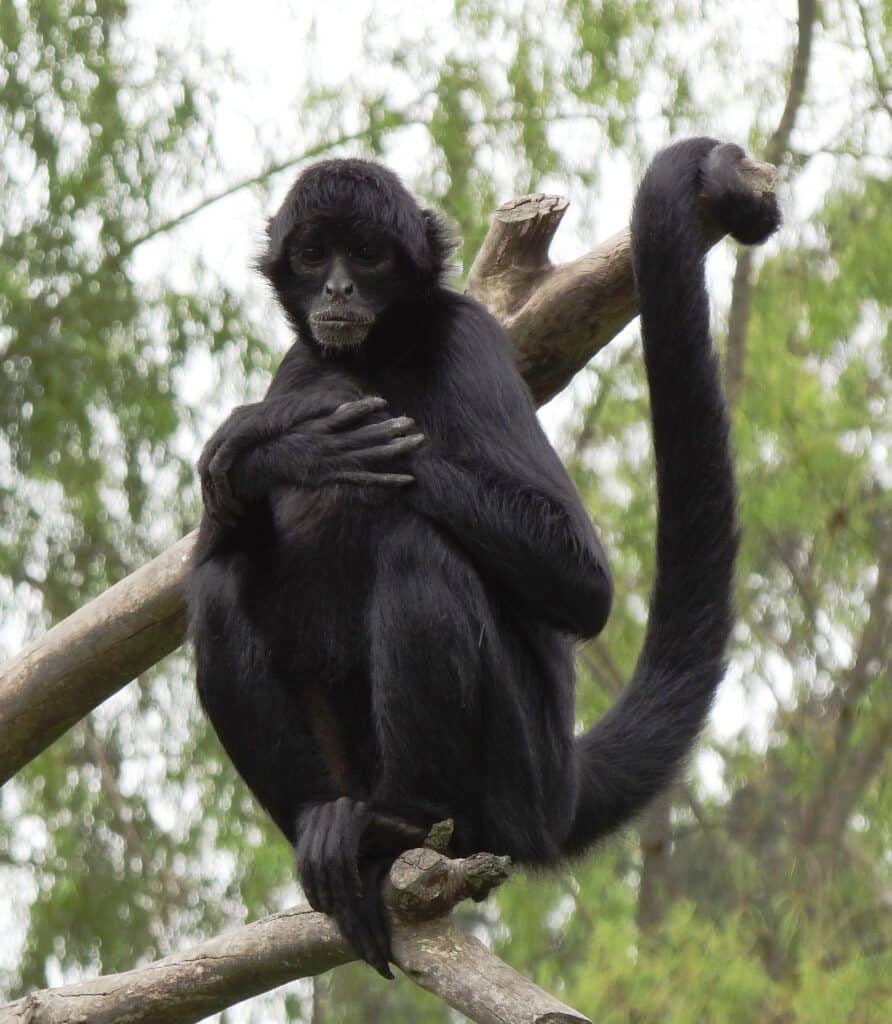
Q. Which of the following can be found as pollutants in the drinking water in some parts of India?
- Arsenic
- Sorbitol
- Fluoride
- Formaldehyde
- Uranium
Select the correct answer using the codes given below.
(a) 1 and 3 only
(b) 2, 4 and 5 only
(c) 1, 3 and 5 only
(d) 1, 2, 3, 4 and 5
Answer: (c) 1, 3 and 5 only
ARSENIC :
- It reaches groundwater through seepage of industrial and mines discharges and fly ash ponds of thermal power plants.
- It is a highly toxic pollutant and its chronic exposure may cause black foot disease.
- The other diseases which may be caused by water contaminated with arsenic are:- diarrhoea, lung and skin cancer.
FLUORIDE:
- Excess fluoride in drinking water may lead to several dangerous health problems like:- Knock-knee syndrome, Fluorosis, neuromuscular disorders, gastrointestinal problems, teeth deformity, etc.
URANIUM
- A report brought out by Duke University, the USA in association with Central Ground Water Board and State Ground Water departments state that Andhra Pradesh, Chhattisgarh, Gujarat, Haryana, Himachal Pradesh, Jharkhand, Karnataka, Maharashtra, Odisha, Punjab, Rajasthan, Tamil Nadu, Telangana, Uttar Pradesh, West Bengal and Jammu & Kashmir have localised occurrence of Uranium concentration.
Some other elements acting as water pollutant are:
- Mercury – causes Minamata disease
- Cadmium – causes Itai-Itai disease, nephritis, nephrosis
- Chromium – causes lung cancer in humans and reduces photosynthetic activities in plants
- Copper – causes vomiting, diarrhoea, stomach cramps, liver damage, kidney disease, etc.
- Zinc – causes fever, nausea, vomiting, diarrhoea, stomach cramps, etc.
- Lead – anaemia, mental retardation, partial paralysis, loss of hearing, etc.
Q. In the grasslands, trees do not replace the grasses as a part of an ecological succession because of
(a) Insects and fungi
(b) Limited sunlight and paucity of nutrients
(c) Water limits and fire
(d) None of the above
Answer: (c) Water limits and fire
Notes:
- The trees do not replace grasses as they require more water than grasses and this would lead to water scarcity for other species.
- Also, trees are prone to catch fire and the fire spreads swiftly. Due to these reasons, trees do not replace the grasses as a part of ecological succession.
Ecological Succession:
- When there is a change in the species structure of an ecological community over a period, it is called ecological succession.
- The process continues until a stable community is formed, which is known as the climax community.
- As the process continues the complexity of the community keeps on increasing.
- Ecological Succession is of following two types:
- Primary Succession – When the succession starts from an area that has not been previously occupied is referred to as primary succession. The pioneer species here include microorganisms, lichens, and mosses.
- Secondary Succession – When the process of succession occurs in an area where species existed at some point in time is referred to as secondary succession.
- Secondary Succession is relatively rapid, as the land contains the nutrients required for the survival of species.
